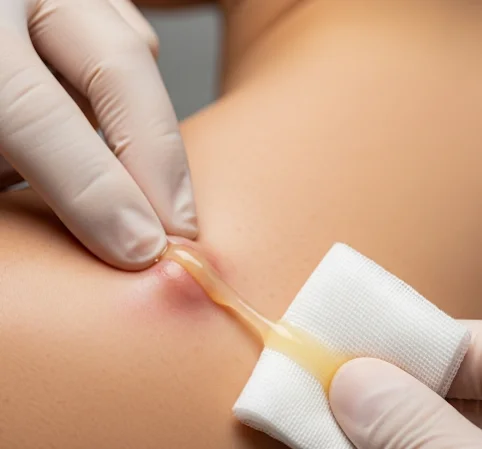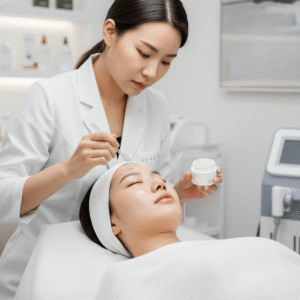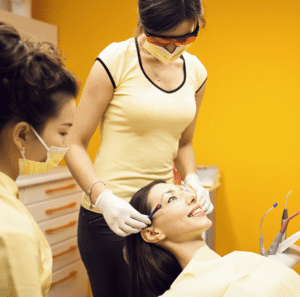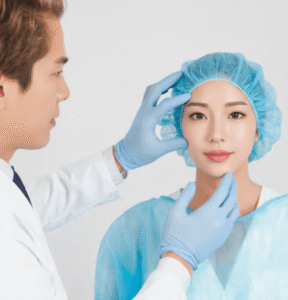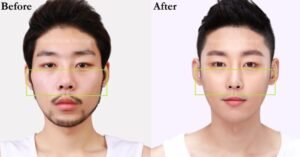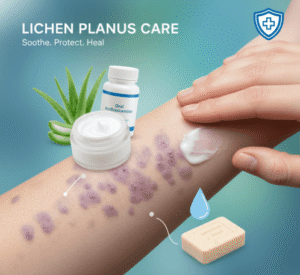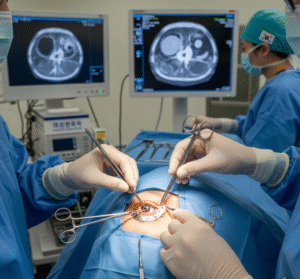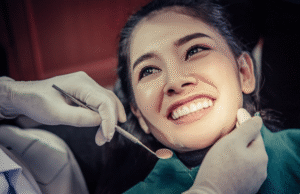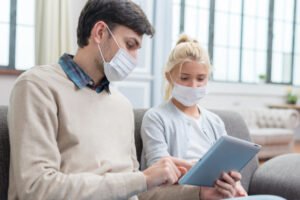What it is
A sebaceous cyst (also known as an epidermoid or epidermal inclusion cyst) is a slow-growing, noncancerous lump that develops beneath the skin. It is usually filled with keratin, sebum, and cellular debris, giving it a soft or firm texture. These cysts often appear on the scalp, face, neck, back, or chest.
Sebaceous cyst drainage is a procedure in which the cyst is incised and the contents expressed to relieve discomfort and reduce swelling. However, drainage alone does not remove the cyst wall, so recurrence is common unless followed by complete excision.
💡 In Korea, dermatology and minor surgery clinics often perform drainage as a first-aid relief measure, with full cyst removal scheduled later for permanent resolution.
Why it’s done
Sebaceous cyst drainage is performed for both medical and comfort reasons:
✔ To relieve pain, pressure, or swelling when cyst becomes inflamed
✔ To prevent rupture under the skin, which could cause infection
✔ To improve appearance if cyst is visible on the face or scalp
✔ To treat infected cysts before definitive excision
✔ To reduce patient discomfort in daily activities (e.g., combing hair, clothing friction)
Alternatives
If drainage is not chosen, alternatives include:
➡️ Observation – Safe if the cyst is small, painless, and stable.
➡️ Steroid injection – May reduce inflammation but doesn’t remove the cyst.
➡️ Surgical excision – Complete removal of cyst and capsule; definitive cure.
➡️ Laser excision – Minimally invasive option available in some Korean clinics.
⚠️ At-home squeezing is not recommended due to risk of infection and scarring.
Preparation
Before sebaceous cyst drainage in Korea:
- 🔹 Dermatology consultation → Confirms cyst type (sebaceous vs. lipoma or abscess).
- 🔹 Medical history → Allergies, bleeding disorders, or tendency for keloid scarring reviewed.
- 🔹 Pre-care → No major preparation needed; area should be kept clean.
How it’s Done
The procedure is simple and usually done in an outpatient setting:
- Cleansing & anesthesia → Area disinfected; local anesthetic injected.
- Incision → A small cut is made over the cyst.
- Drainage → The contents (keratin, sebum) are expressed manually.
- Irrigation → The cavity is cleaned to remove debris.
- Dressing → Antibiotic ointment and a sterile dressing applied.
⏳ Duration: 15–30 minutes
📅 Sessions: One for drainage; follow-up visit often scheduled for complete excision
Recovery
Recovery is generally quick:
➡️ First 1–2 days → Mild swelling, tenderness, or drainage.
➡️ 1 week → Wound usually heals; stitches rarely required for simple drainage.
➡️ Ongoing → Full removal (excision) may be done after inflammation subsides.
Post-care in Korea includes:
- Antibiotic ointment and daily wound care
- Oral antibiotics if cyst was infected
- Avoiding pressure or friction on the area
- Sunscreen or scar gels if on visible skin (face, neck)
Complications
While safe, sebaceous cyst drainage can have minor risks:
⚠ Possible side effects:
- Recurrence (common if cyst wall remains intact)
- Infection if cavity not properly cleaned
- Temporary scarring or pigmentation changes
- Rare abscess formation if untreated
Korean dermatologists minimize risks with sterile technique, proper irrigation, and scheduling full excision when needed.
Treatment Options in Korea
Korea offers efficient and aesthetic-focused approaches for sebaceous cyst care.
🇰🇷 Popular Korean Approaches:
- Simple drainage → For immediate relief in inflamed or infected cysts
- Drainage + antibiotics → Standard care for infected cysts
- Definitive excision → Surgical removal of cyst capsule to prevent recurrence
- Laser-assisted excision → Minimizes scarring on visible areas (face, scalp)
- K-beauty recovery care → Scar gels, brightening creams, and LED light therapy
✅ Final Thoughts
Sebaceous cyst drainage in Korea is a quick and effective method to relieve pain, swelling, or infection. However, drainage is usually seen as a temporary measure, with complete surgical or laser excision needed for permanent results.
With Korea’s advanced dermatology expertise and scar-prevention techniques, patients receive not only medical relief but also aesthetic-focused outcomes, ensuring smoother, healthier-looking skin after treatment.

